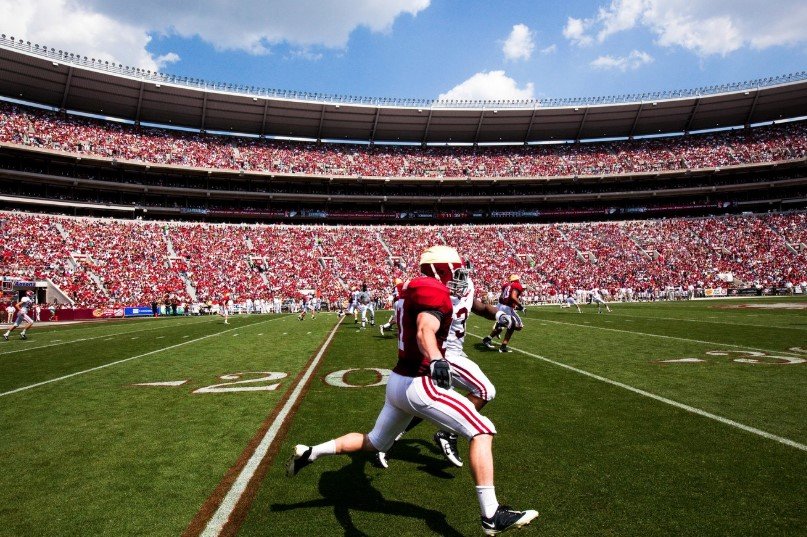College football is undergoing a seismic shift. The under-the-table recruiting tactics of the past—covert handshakes, luxury dinners, and booster-funded perks—are relics of a bygone era. Today, the game is dominated by name, image, and likeness (NIL) money, fueling a free-for-all that even veteran coaches struggle to control. And if you ask Georgia head coach Kirby Smart, the situation is spiraling out of control.
On April 1st, after Georgia wrapped up its 10th spring practice, Smart didn’t mince words. What should have been a routine media session quickly turned into a fiery indictment of the NIL-driven chaos engulfing college football. He painted a stark picture: backdoor dealings, player auctions, and a broken system that could leave athletes worse off in the long run.
“I don’t know if the kids win in this model that we currently have if they win long term,” Smart said. His message was clear: NIL isn’t just about student-athletes getting paid—it’s about a system that has turned recruiting into the Wild West.
Behind the Scenes: How NIL Has Transformed College Recruiting
For decades, college football operated within a thinly veiled structure of unwritten rules. The top programs competed for elite talent through a mix of tradition, facilities, and subtle incentives. NIL changed all of that overnight. Now, the recruiting process resembles a high-stakes auction, with agents, boosters, and third-party collectives making backdoor deals that often leave coaches out of the loop.
According to Smart, players aren’t just being recruited—they’re being shopped around. Some athletes, without even entering the transfer portal, are approached with lucrative NIL offers from competing schools. In many cases, it’s not even the players themselves making the calls; agents and handlers orchestrate these moves, leveraging existing programs to secure bigger paydays.

Smart’s frustration isn’t just about losing talent—it’s about the lack of structure. Coaches are finding themselves in Zoom meetings where players, still committed to their programs, are being quietly evaluated by outside schools. This isn’t traditional recruiting; it’s a transactional marketplace where loyalty and development are secondary to dollar signs.
Georgia’s NIL Headaches: A Growing Problem?
Georgia isn’t immune to this new reality. As one of college football’s powerhouse programs, the Bulldogs have always been a prime target for poaching. But in the NIL era, the pressure has intensified.
Several Georgia players have reportedly been approached with six-figure offers from other programs, often before they even enter the portal. These conversations, though technically against NCAA rules, are nearly impossible to regulate. The NCAA, already struggling to enforce existing guidelines, is essentially powerless in preventing these behind-the-scenes negotiations.
And it’s not just Georgia dealing with this issue. Programs across the country are facing similar challenges, where young athletes are presented with life-changing sums of money before they’ve even secured starting roles. The lack of oversight means that even if a player doesn’t take the bait, the distraction is enough to disrupt team chemistry and focus.
Where Does the NCAA Stand?
For all the complaints from coaches, the NCAA’s response has been sluggish at best. Despite growing concerns from high-profile figures like Smart, meaningful regulation has yet to materialize. And even if it does, enforcing NIL guidelines in an era of decentralized deals and third-party collectives will be a logistical nightmare.
Here’s what’s happening now:
- Schools technically aren’t allowed to use NIL to recruit players—but everyone knows it’s happening.
- The transfer portal has become a free agency system, with top talents being lured by the highest bidder.
- Players are entering college with multimillion-dollar NIL deals, but few financial protections or long-term career planning.
- Coaches like Smart are left in the dark while agents and boosters dictate where top recruits land.
The NCAA has proposed some reforms, but there’s little confidence that these measures will be enough. Many believe that without federal intervention, the current landscape will only get worse.
What’s Next for Georgia and the NIL Era?
Smart’s warning may be loud, but it’s unclear whether it will lead to real change. The NIL model isn’t going anywhere—it’s too lucrative, too ingrained, and too beneficial for the athletes cashing in on their talent. But without structure, the system could leave players vulnerable, especially those who don’t have the right advisors guiding them through the financial and legal intricacies of their deals.
For Georgia, the challenge is clear. To stay competitive, the Bulldogs must find a way to navigate this new world without compromising the integrity of their program. That means adapting, securing top recruits without getting dragged into bidding wars, and ensuring their own players aren’t being siphoned off by NIL-driven poaching.
Whether or not the NCAA steps in to fix the mess remains to be seen. But one thing is certain—Kirby Smart won’t be the last coach to sound the alarm on the NIL era’s unintended consequences.
